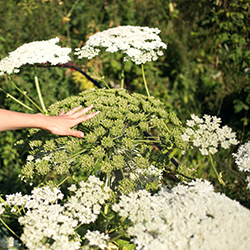Protecting Your Vision from Injuries and Accidents
According to the American Academy of Ophthalmology (AAO), approximately 2.5 million Americans suffer an eye injury every year. Nearly half of those injuries occur in the home as a result of activities related to cleaning, cooking, yard work and home repairs. Another 40+% are the result of sports and other recreational activities, while a mere 8% occur in the workplace.
Why the big discrepancy between home and recreational injuries versus workplace eye injuries? Two words: Protective eyewear.
Required in many workplaces, protective eyewear has been proven time and time again to be the best line of defense against injury on the job. In fact, about 60% of eye injuries that do occur in workplace happen because an individual was not wearing any eye protection.
Not surprisingly, wearing eye protection tops the AAO’s list of measures for preventing eye injuries. Both the AAO and the American Society of Ophthalmic Trauma recommend that every household have at least one pair of ANSI-approved protective eyewear for use during projects and activities that may present risk of injury.
When would you use protective eyewear? During any activity that may present risk of injury.
This would include, but is not limited to:
- Sports—particularly contact sports and bicycle riding
- Use of power tools
- Use of lawn equipment
- Any type of construction
- When handling chemicals such as cleaning solutions, detergents, polishes, stain removers, pest products, lawn treatments and automotive fluids
- When cleaning brush from the yard
NOTE: There are at least two plants found in Vermont that pose a risk of eye injury if the eye is exposed to the sap of the plant. These plants should NEVER be touched with bare hands and, even if wearing gloves, extreme care needs to be taken to not touch your eye or any other exposed part of your body.
| Wild (Poison) Parsnip |
 |
| Giant Hogweed |
 |
Other recommended measures include:
- If you have children or older adults living in your home, cushion sharp corners and edges of furnishings and home fixtures
- Keep your tools in good condition; damaged tools should be repaired or replaced.
- When spraying, make sure that all spray nozzles are directed away from you or other individuals who may be nearby
- When using hazardous products (e.g., bleach, detergents, cleansers), always read and follow the manufacturer warnings and guidelines and use in well-ventilated areas
- Never mix chemical agents or other caustic substances
- Always wash your hands thoroughly after using hazardous products
- Before beginning yard work, such as mowing or using a motorized weed trimmer, remove debris including branches, loose stones or other objects that could potentially become airborne
- Keep tools and cleaning solutions out of the reach of children
- When cooking, use shields or lids to prevent hot oils or liquids from splashing into your eyes
- Be careful with fireworks. Only adults should handle fireworks. Read labels carefully, and always wear eye protection.
- Never aim a laser pointer at anyone’s eyes and never let children play with them
While minor irritations to the eye can be treated safely at home—usually by flushing the eye with cool, clean water—you should never delay seeking medical attention for serious injuries. Signs of serious injuries include:
- Significant eye pain
- Blurred or double vision
- Unable to move the eye normally
- Pain when moving the eyes
- The eye bulges out or is sunken in
- The eye is swollen shut
- The cornea (the clear covering in front of the eye) appears cloudy
- Blood pooling behind the cornea
- Lacerations (cuts) on the eyelid
- The pupil size or shape looks different from the other eye
Untreated, many eye injuries can cause impaired vision, blindness and other eye problems. Never hesitate to seek medical attention, even calling 911 for serious injuries.
Dr. Mark Zimpfer, MD is a board-certified Emergency Medicine Specialist at Southwestern Vermont Medical Center.
8098